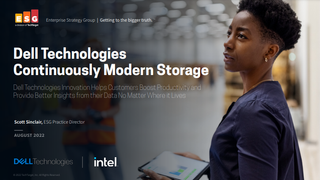Interop 2012: Q&A, Saar Gillai, CTO, HP Networking
IT Pro spoke to Saar Gillai, vice president and CTO of HP Networking about OpenFlow and how a new era of software-defined networks could disrupt the entire networking industry.
In your experience, which way are most businesses leaning in this respect?
Most enterprises would more likely want the benefits of SDNs, which is more flexibility and agility. At the same time, they would probably want most of the stuff to come from an established vendor.
That's where you have things like virtual application networks, which are using SDNs to provide the capability of virtualising the network. It uses SDN to do that but really all the stuff is done by us.
]If the likes of Google are using OpenFlow to build SDNs with commoditised switches and servers, why wouldn't enterprises do the same? Wouldn't this cut out HP completely?
It is a deeper question! Why don't enterprises also build their own servers like Google? What is the primary goal of Google here? Its goal is to build the largest compute system. It has a lot of staff focused on that.
The primary goal of most enterprises is not to do that. They would probably prefer to have someone else to do that for them and worry about that so they don't have to. Google does all kinds of things for itself, building switches that other enterprises wouldn't. Enterprises don't have armies of programmers or hardware engineers to do that.
If you look at some of these big providers, their applications are very homogenous. They are not doing every possible thing, they are doing some very specific things and it is much easier to design a system for a homogenous environment than for a much more diverse environment.
Get the ITPro. daily newsletter
Receive our latest news, industry updates, featured resources and more. Sign up today to receive our FREE report on AI cyber crime & security - newly updated for 2024.
The average enterprise actually has a more complex environment than Google. They may not be as large, they may not be a scalable, but it has a lot more complexity because Google is running a much more simpler system; they are supporting the cloud. It is a different dynamic.
At the end of the day enterprises are trying to run applications and they are buying something from the vendor to give them some flexible solution that provides reliability and support because they don't want to think about those things. They don't want to worry about it.
Rene Millman is a freelance writer and broadcaster who covers cybersecurity, AI, IoT, and the cloud. He also works as a contributing analyst at GigaOm and has previously worked as an analyst for Gartner covering the infrastructure market. He has made numerous television appearances to give his views and expertise on technology trends and companies that affect and shape our lives. You can follow Rene Millman on Twitter.





